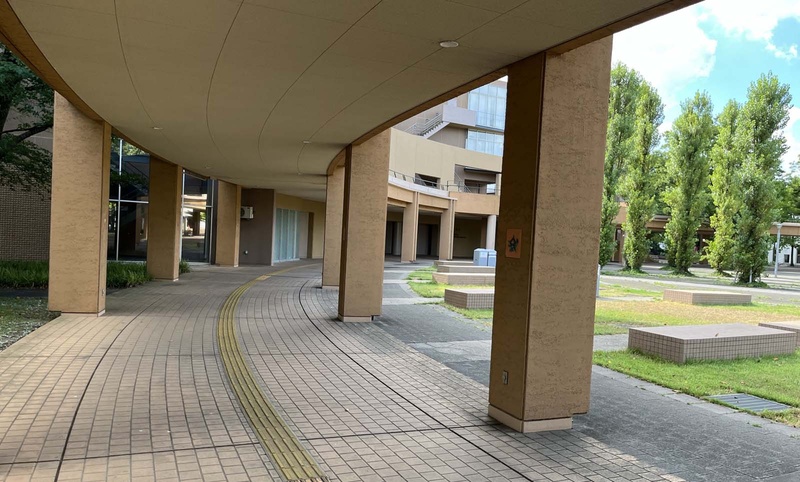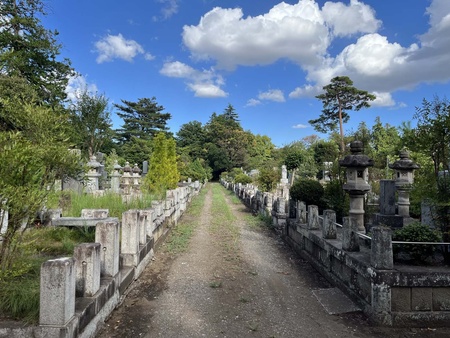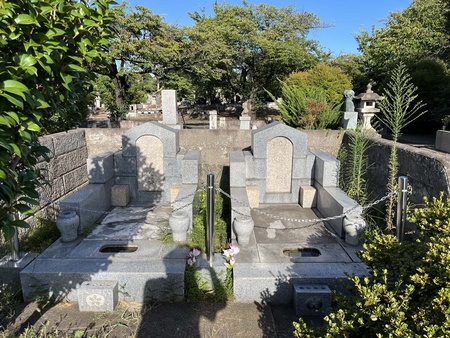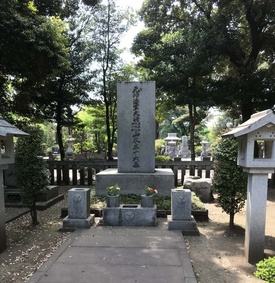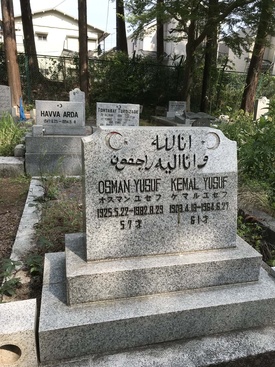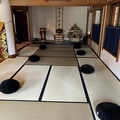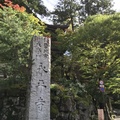I was waiting near the entrance to the third university in Tokyo where I was to teach as a visiting lecturer. One of the school’s graduate students offered to show me around the sprawling community adjacent to campus.
I had met Naomi a few weeks back at a reception for Japanese fellows who were soon to leave for various destinations in the US, which for her was New York City. She was studying for a Ph.D. in international relations and had received a research fellowship from the same program that sponsored my visiting lectureship.
When Naomi pulled up on a bike waving at me, I couldn’t help but notice a fresh bandage underneath her left eye. It was a gym injury, she said, but didn’t sweat the details. I imagined a taut exercise band slipping from its hold and hitting her square in the face—or perhaps she had been in the ring with an overzealous sparring partner.
“I suppose you’re familiar with the campus since you’ve been teaching here for a month,” Naomi said. I nodded even as I looked across the expanse of concrete circles, grass rectangles, and glass boxes.
Unlike the University of Tokyo or the women’s college where I also taught, this school had no old buildings giving it a collegiate feeling. Instead, it looked like a high-tech corporate headquarters, minus mitered windows and parking lots filled with charging stations.
From the campus we walked a few minutes to Tokyo’s largest municipal cemetery, which contained the remains of many well-known figures. Naomi said it was a good place for a historian like me to visit.
On our way, she asked how I liked teaching at her school. I smiled and gave a thumbs up. “Even though all of my students are Japanese, their English is pretty good.”
“Their English should be good,” she said. “It’s a university that specializes in foreign languages and everyone must be proficient in at least English and another language besides Japanese.”
“One student in my class had studied in Germany,” I said. “And another just came back from Mongolia. I love the school’s international flavor. In fact, I asked my host professor if there was a permanent faculty position for me. But no luck. Even a professor who teaches in English about US history must also be fluent in Japanese.”
Naomi scrunched her face and shot me a curious look.
“Why would you want to stay permanently in Japan?” Her question sounded more like an accusation. Born and raised in Tokyo, she was as desperate to leave her country as I was to remain there. We found ourselves in an intriguing role reversal while strolling past the station on the way to the cemetery.
“Why do you like America so much?” I asked. “Every month there’s another mass shooting. No stringent gun control like in Japan and the current politics are a mess.”
“Well, Japanese politics are only slightly less depressing. And you don’t know what it’s like to be Japanese.”
Naomi, the youngest of three sisters, was the only one who had attended international schools. As a young girl she preferred to play by herself so her mother thought that she’d fare better in a curriculum that encouraged rather than stigmatized independent learning. Thus explained Naomi’s excellent English—and no doubt the feistiness with which she argued.
“In Japan,” she said, “there are all these unwritten rules and codes of conduct. Like my mother told me I should never discuss three things outside the home: politics, religion, and educational status.”
I could see how discussing politics and religion could be risky, but how was education a problem? Might this explain why my students in Japan didn’t wear shirts or hoodies with their school name? I asked Naomi about this, telling her that in the US it was common to see college students dressed in clothing with their university brand; and not just them but also their parents, alumni, and anyone who’s a fan of the school’s sports teams.
“Wearing a t-shirt with your college name on it would be showing off. Not just that, it would be shameful. Like telling other people they’re losers if they couldn’t get into your school.”
When we arrived at the cemetery, Naomi picked up a map in Japanese that identified the locations of a long list of famous people interred there. Our first target was Akiko Yosano, a pioneering poet, feminist, pacificist, and social reformer.
I didn’t know it then, but I had read about her in Pico Iyer’s memoir recounting his year in Japan, The Lady and the Monk. Befitting his theme of impossible love, Iyer reproduced one of Yosano’s poems in which a young girl seeks to seduce monks with “come-hither boldness.”
As we stood before the poet’s gravesite, I cautioned Naomi about being on her own in New York. “You need to be careful. It’s much more dangerous in the US especially for women. Don’t walk alone at night through Central Park. It’s not like Tokyo where women have the luxury of taking their safety for granted.”
Did Naomi even appreciate how good she had it in Japan? The country’s major cities topped international rankings as some of the safest in the world. One study found that the overall crime rate in the US was four times higher than Japan’s, while the murder rate was twenty-six times higher and the figures for rape and violent gun crimes were sixty-six and one hundred and forty-eight times higher, respectively.
As a man in the US, I’d been trained to keep my distance from a woman when walking at night, so as not to scare her. Naturally, I did this in Tokyo but discovered— much to my surprise—that Japanese women weren’t afraid of my footsteps, not even in dark, isolated places.
“I bet you don’t look around fearfully at night,” I said to Naomi. “Carry mace or pepper spray. Or walk in the middle of the street clutching your bag tightly. It’s delightful to see how empowered Japanese women are to feel they can go wherever they want and at whatever time of day or night.”
Naomi listened with a skeptical look on her face as we approached another grave marker on the list. “Here’s Admiral Yamamoto Isoroku,” she said, while looking down at the map. “He was the leader of the Japanese Navy during World War II. He masterminded the Pearl Harbor attack.”
We admired the admiral’s gravesite that towered over the others and was situated in an exclusive strip with other military royalty. I wondered who swept it clean and adorned it with fresh flowers, and why the pamphlet didn’t say that his plane was shot down during the war by US pilots seeking revenge for Pearl Harbor?
“There’s another thing about safety in the US,” I said. “You should you be prepared for racism as well as violent crime. Americans don’t appreciate Pearl Harbor as the site of a great naval victory. It’s a solemn place that for some evokes anger against the Japanese—or even Americans like me who look like them.”
“By the same token,” I continued, “Americans see the atomic bombings of Hiroshima and Nagasaki as great scientific achievements rather than as horrible atrocities that killed hundreds of thousands of innocent civilians and caused a living nightmare for survivors suffering from radiation poisoning.”
“But the war was so long ago. Are there still hard feelings?”
“You’d be surprised at the shelf-life of war antagonisms. But there’s also the more recent wave of anti-Asian racism based in hostility against immigrants as well as trade and military fears regarding China. Any of these issues can invite trouble for you as an Asian person.”
As it turned out, Naomi would be in the US during the COVID pandemic and would no doubt be aware of, if not see for herself, the reality of anti-Asian hatred and violence. But as we walked side-by-side to a different part of the cemetery, she remained skeptical. “Why do you love Japan so much?” she asked.
I replied by offering a description of my commute on Los Angeles Metro—dirty subway cars, late trains and unannounced cancellations, homeless encampments near stations, unhoused persons parked inside the trains often high on drugs, and, most menacingly, the threat of being mugged and victimized by gun violence. The current state of LA Metro, I said, was a microcosm of the kinds of social problems that plagued large American cities. The conditions would shock the average Tokyoite who expected safety, cleanliness, and order not just on public transportation but everywhere in the city and at all hours of the day. If only LA could be like Tokyo!
In reflecting upon this exchange with Naomi, I’m brought back not just to my year in Tokyo but another time more than forty years ago when Japan was being compared favorably with the US. This was during the 1980s when Japan’s “miracle” economy was booming and its exports grew rapidly in once-dominant US industries such as steel, automobiles, and consumer electronics. The American sociologist Ezra Vogel, in his bestselling Japan as Number One, maintained that the country’s near-total reconstruction after World War II had given it not just economic advantages over the US. Japan was also better at managing the most important social challenges for the new post-industrial world—namely crime, poverty, social welfare, education, urban density, and what would come be known as ecological sustainability.
Over forty years later, Vogel’s doomsday concerns about US economic vulnerabilities vis a vis Japan seem exaggerated. But the post-industrial problems he highlighted remain with us, and now added to them are the climate crisis, worldwide immigration pressures, aging populations, and new forms of inequality growing out of a technologically turbo-charged global economy.
Does Japan still offer useful lessons today when its economic bubble has long since burst and China has taken over its position as the world’s second largest economy? I think it does, especially through its comparatively low rates of crime and violence, and relatively high levels of education, health, and social orderliness. But is anybody listening?
We Americans no longer seem interested in learning from Japan, while the Japanese, who have been humbled by nearly three decades of stagnant economic growth, aren’t bursting with pride to teach us. I wondered whether Naomi would even tell her American friends how safe Tokyo was compared to New York City—and if she did, whether any of them would consider how America might learn from Japan.
The sun was now passed its peak as Naomi and I came to a shaded, non-descript section on the outer edge of the cemetery. The gravestones contained Middle Eastern names. One was for two men, the same last name appearing in romanized script, Turkish, and katakana—a father and son? Were they part of an immigrant bachelor community selling ethnic food and doing manual labor? Like the US but on a much smaller scale, Japan has long been a destination for poor immigrants with dreams of striking it rich. They work and live under harsh and lonely conditions, sacrificing to send money to their families back home.
As we took in the foreigners’ graves, Naomi and I stopped arguing over the differences between Japan and the US. Our silence spoke volumes. Did we finally agree on something? When it came to immigrant integration, it was clear to me at least that Japan was not number one—and had never been.
Although I hoped to find a job and remain in Tokyo for good, I certainly didn’t want to live like these immigrants, who even in death were sequestered from the mainstream. No. Even though I wasn’t Japanese or someone who’s grave would be featured on a visitor map, I still wanted my ashes to rest for eternity in a place that symbolized my acceptance and inclusion, whether in Japan or back home.
© 2023 Lon Kurashige


